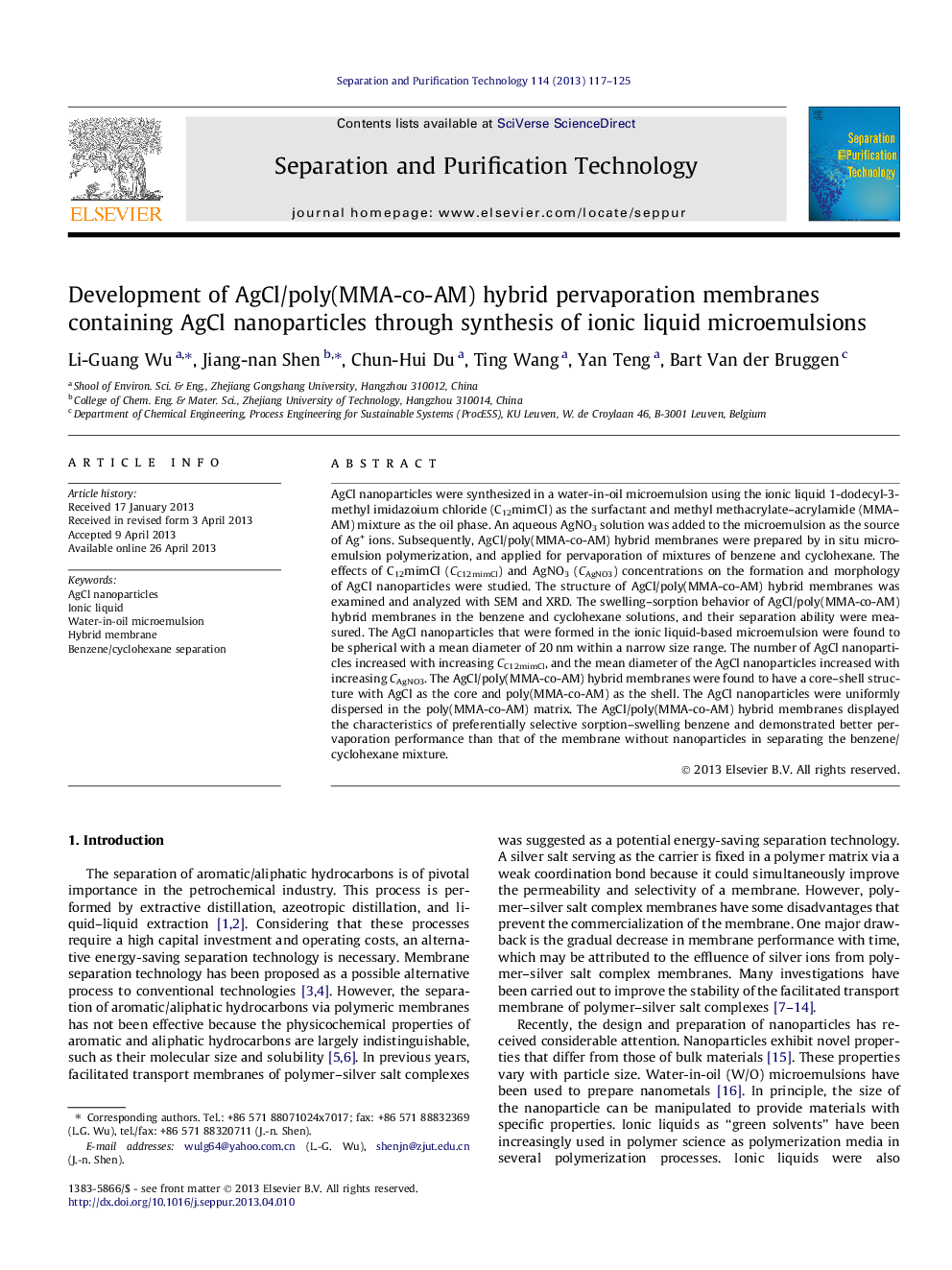| Article ID | Journal | Published Year | Pages | File Type |
|---|---|---|---|---|
| 641470 | Separation and Purification Technology | 2013 | 9 Pages |
•Small AgCl nanoparticles generated in microemulsion using the ionic liquid as a surfactant.•AgCl nanoparticles distributed well in hybrid membrane after polymerization.•The size and the number of AgCl nanoparticles changed with preparation conditions.•Hybrid membrane including small AgCl particles have high solubility of benzene.
AgCl nanoparticles were synthesized in a water-in-oil microemulsion using the ionic liquid 1-dodecyl-3-methyl imidazoium chloride (C12mimCl) as the surfactant and methyl methacrylate–acrylamide (MMA–AM) mixture as the oil phase. An aqueous AgNO3 solution was added to the microemulsion as the source of Ag+ ions. Subsequently, AgCl/poly(MMA-co-AM) hybrid membranes were prepared by in situ microemulsion polymerization, and applied for pervaporation of mixtures of benzene and cyclohexane. The effects of C12mimCl (CC12mimCl) and AgNO3 (CAgNO3) concentrations on the formation and morphology of AgCl nanoparticles were studied. The structure of AgCl/poly(MMA-co-AM) hybrid membranes was examined and analyzed with SEM and XRD. The swelling–sorption behavior of AgCl/poly(MMA-co-AM) hybrid membranes in the benzene and cyclohexane solutions, and their separation ability were measured. The AgCl nanoparticles that were formed in the ionic liquid-based microemulsion were found to be spherical with a mean diameter of 20 nm within a narrow size range. The number of AgCl nanoparticles increased with increasing CC12mimCl, and the mean diameter of the AgCl nanoparticles increased with increasing CAgNO3. The AgCl/poly(MMA-co-AM) hybrid membranes were found to have a core–shell structure with AgCl as the core and poly(MMA-co-AM) as the shell. The AgCl nanoparticles were uniformly dispersed in the poly(MMA-co-AM) matrix. The AgCl/poly(MMA-co-AM) hybrid membranes displayed the characteristics of preferentially selective sorption–swelling benzene and demonstrated better pervaporation performance than that of the membrane without nanoparticles in separating the benzene/cyclohexane mixture.
Graphical abstractFigure optionsDownload full-size imageDownload as PowerPoint slide
